Well, if you haven’t already got an inbound marketing strategy in place, you strongly need to consider one. Inbound marketing is a highly-effective, customer-centric approach to lead generation, which will revolutionize your sales and marketing activities.
Whether you work for a small, new or well established company, you’ve probably thought about generating more inbound leads. You may be new to the terms inbound marketing and inbound lead generation or maybe you’re just interested in learning more?
Inbound marketing highlights the importance of adapting your content to the needs and desires of your target audience so that their search path automatically comes across your information. Once they discover your website, the trick is to prolong their visit, subtly guiding them through the sales process. A smartly balanced inbound marketing strategy allows you to convert your leads into customers, as simple as that.
But how can you improve your inbound lead generation? Ask yourself these questions:
1. Are you creating the right kind of content?
This is the key. You need content that speaks to your prospects at every stage of the buyer’s journey, offering the information they want at the precise moment they need it.
B2B content has to be relevant, captivating and provide value, in order to keep your prospects engaged as they move through your sales funnel. The right content, in fact, will lay the foundation for a relationship with your prospects, based on expertise and trust, all from interactions with your website.
2. Do you stick with a clunky old website?
Don’t think you can get away with using an old-style website because you’re in a ‘traditional’ industry. Your prospects and customers may think of your offering as ‘traditional’, but you can bet they’re mainly doing business online using the best website interfaces that exist. They’ll definitely notice the difference when they visit your site.
3. Are there enough options for readers to interact with you?
Isn’t the whole idea to strike up a relationship with readers and website visitors? Every piece of content should include a call to action. Make it easy, simple and fast to complete, and don’t ask for too much too soon. Maybe ask for a name and an email to start with, in exchange for a download, or even a one-question poll. It helps to break the ice and start interacting.
4. Is there enough compelling video in place?
Right now, video is the superstar of online marketing, and live video is even hotter. Researchers at Facebook found that people are 300% more likely to watch a live video than one that was pre-recorded. And according to the live video company, Livestream, more people would rather watch live video than read a blog (80%), and 82% of people prefer live video to social posts. For B2B marketing, why not consider using live video for interviews, product demos, ‘behind the scenes’ videos of how products are made or tested, and event coverage.
Suggestion: consider adding cinemographs to your web pages. These are still photos with an element that moves, or panning or zooming on a still photo. They offer a great way to give life to B2B web pages.
5. Have you tried re-targeting?
Re-targeting means ‘following’ your website’s visitors when they leave and presenting them with your ad while they’re visiting other websites. There are two ways to track your prospects:
- Pixel-based re-targeting uses cookies (e.g. Facebook Pixel). Those are tiny bits of JavaScript (a pixel) that are placed on the browser to tag anonymous website visitors. When they visit other sites, that cookie tells re-targeting platforms to show them a particular ad. This happens immediately after leaving your site, so it reinforces the intention your visitor had.
- Another way to re-target is list-based re-targeting, where you supply a list of emails to a social media platform. It links those emails with profiles of its members and shows them a particular ad (e.g. Facebook Custom Audiences).
You can use re-targeting at any stage in the sales process, from building awareness to generating qualified leads.
6. Are you learning from your analytics?
One of the big benefits of digital is that it makes it easy to track prospects’ activity and the performance of your campaigns. Make sure you dig into all of the analytical tools at your fingertips, including Google Analytics and all the reports generated by your marketing automation system.
For real-time insight into the impact of your digital marketing, consider SONAR, Living Stone’s digital marketing analytics tool and reporting service. SONAR aggregates all analytics from social media channels, Google Analytics-driven online publications, e-news engines, and APPs into a single score, to provide you with precise information on the global impact of your digital marketing activities.
In addition to providing a global view of what’s taken place in your digital ecosystem during a given period, SONAR identifies important trends (what happened on which channel, for example), and presents precise information about cause and effect, analyzing specific data from diverse channels separately.
To make sure you’re not missing any opportunities, we’ve put together The beginners guide to generating inbound leads with our partner HubSpot.
With this guide, you can keep track of all the available channels you should be using next time you launch a marketing campaign. Download our e-book today to start maximizing the return on investment for your future marketing campaigns or check out our website.




